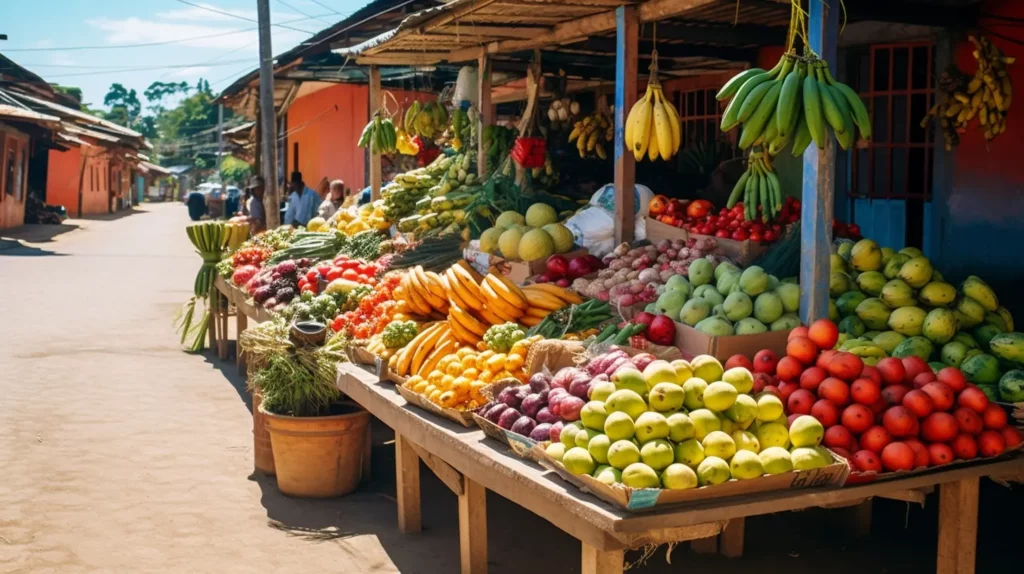Mexico is renowned for its vibrant culinary traditions and diverse agricultural heritage.
When it comes to buying fresh fruits and vegetables in Mexico, immersing yourself in local markets and stores can be a delightful and rewarding experience.
In this article, we will provide you with a guide to buying fruits and vegetables in Mexico in Spanish, while introducing you to some unique and unusual varieties that are native to the country.

Essential Vocabulary
Before diving into the world of Mexican fruits and vegetables, let’s familiarize ourselves with some essential Spanish terms:
- Fruits: Frutas
- Vegetables: Verduras
- Market: Mercado
- Grocery store: Tienda de comestibles
- Fresh: Fresco/a
- Ripe: Maduro/a
- Organic: Orgánico/a
- Seasonal: De temporada
Popular Fruits and Vegetables
Mexico offers a wide range of fruits and vegetables that are both popular domestically and internationally. Here are some commonly found options:
- Mangoes: Mangos
- Avocados: Aguacates
- Pineapples: Piñas
- Watermelons: Sandías
- Tomatoes: Tomates
- Peppers: Chiles
- Corn: Maíz
- Cilantro: Cilantro
- Radishes: Rábanos
- Zucchini: Calabacín
Unique and Unusual Fruits
Mexico is home to a plethora of unique and exotic fruits that are not commonly found elsewhere. Here are a few examples along with their descriptions:
- Pitaya: Pitaya, also known as dragon fruit, is a vibrant, scaly fruit with a sweet and refreshing flavor. It comes in different colors such as pink, white, and yellow, and is perfect for enjoying on its own or in smoothies.
- Guanábana: Guanábana, or soursop, is a spiky green fruit with a soft white flesh that has a sweet and tangy flavor. It is often used to make juices, desserts, and ice creams.
- Tuna: Tuna refers to the fruit of the prickly pear cactus. It has a vibrant red or purple color and a mildly sweet taste. It can be eaten raw, juiced, or used in jams and jellies.
- Zapote: Zapote is a tropical fruit with a brown, rough exterior and a creamy, custard-like flesh. It has a sweet and slightly tangy flavor and is often eaten fresh or used in desserts.
- Mamey: Mamey is a large, brown fruit with a rich, sweet flavor and a creamy texture. It is commonly used to make milkshakes, ice creams, and desserts.
Conversational Phrases
To enhance your shopping experience and interact with vendors, here are some useful phrases:
- ¿Cuánto cuesta esto? (How much does this cost?)
- ¿Está maduro/a? (Is it ripe?)
- ¿Tiene más variedades de frutas/verduras? (Do you have more varieties of fruits/vegetables?)
- ¿Puedo probar antes de comprar? (Can I taste before buying?)
- ¿Cuál es la fruta/verdura de temporada? (What is the seasonal fruit/vegetable?)
By utilizing these phrases, you can engage with vendors, inquire about prices, check for ripeness, and explore the range of seasonal produce available.
Summary
Exploring the world of buying fruits and vegetables in Mexico is a journey filled with flavors and colors. From familiar favorites like mangoes and avocados to unique and exotic fruits like pitaya and mamey, Mexico offers a cornucopia of flavors for you to discover. By familiarizing yourself with essential vocabulary, popular fruits and vegetables, and conversational phrases, you can confidently navigate the markets and grocery stores while embracing the richness of Mexican cuisine.
Take the opportunity to engage with local vendors, ask about the ripeness of fruits, inquire about seasonal offerings, and even request a taste before making a purchase. This not only enhances your shopping experience but also allows you to connect with the culture and gain insights into the best ways to enjoy each fruit and vegetable.
While exploring the markets and grocery stores, keep an eye out for other unique Mexican produce such as guava (guayaba), jicama, tomatillos, and cactus paddles (nopales). These ingredients are widely used in Mexican cuisine and can add a distinct touch to your meals.
Remember, buying fruits and vegetables in Mexico is not just about fulfilling your grocery needs but also immersing yourself in the country’s culinary heritage. Embrace the vibrant colors, enticing aromas, and unique flavors that Mexican produce offers. Whether you’re preparing traditional Mexican dishes or adding a touch of Mexico to your own creations, the freshness and variety of fruits and vegetables will elevate your culinary adventures.
So, venture into the bustling markets, interact with the friendly vendors, and let your taste buds savor the delights of Mexican fruits and vegetables. With this guide and a willingness to explore, you’re ready to embark on a flavorful journey through the world of Mexican produce.
¡Buen provecho! (Enjoy your meal!)

